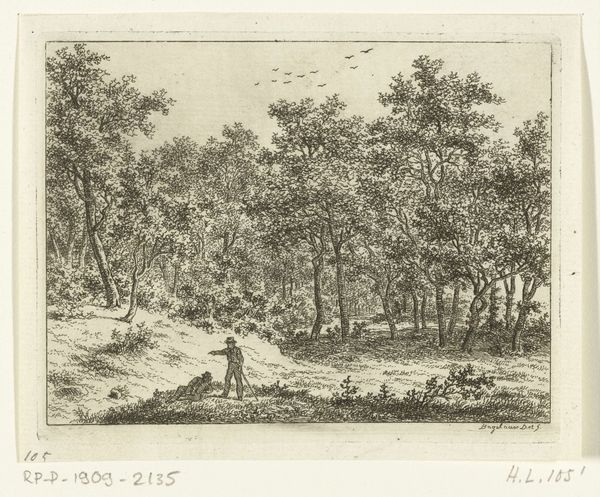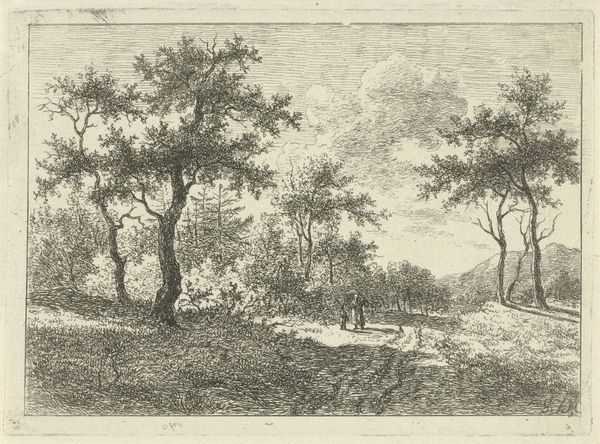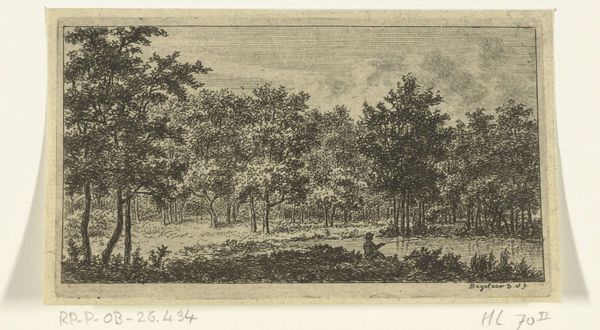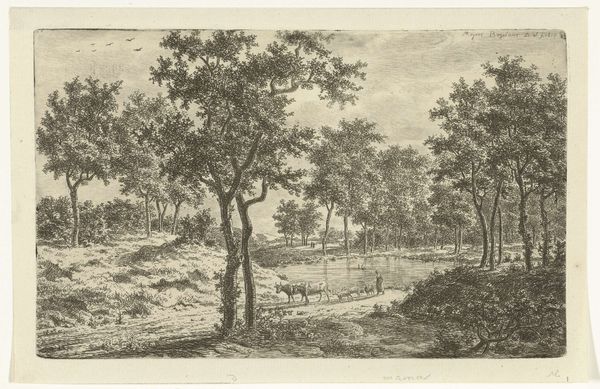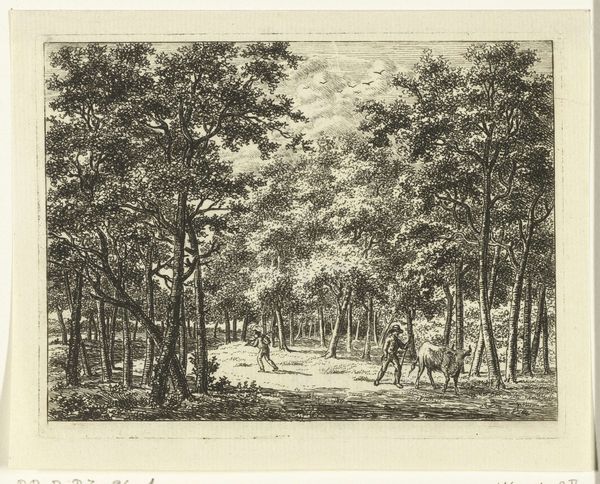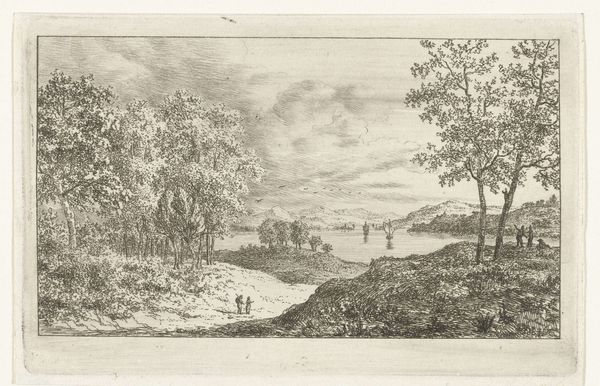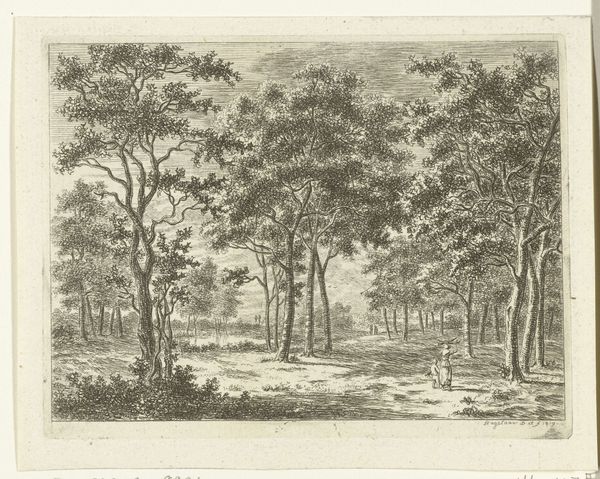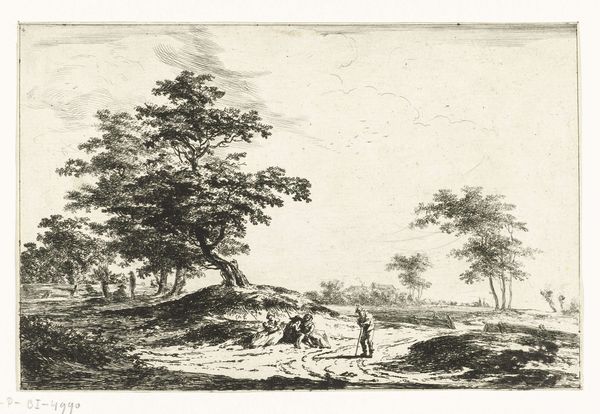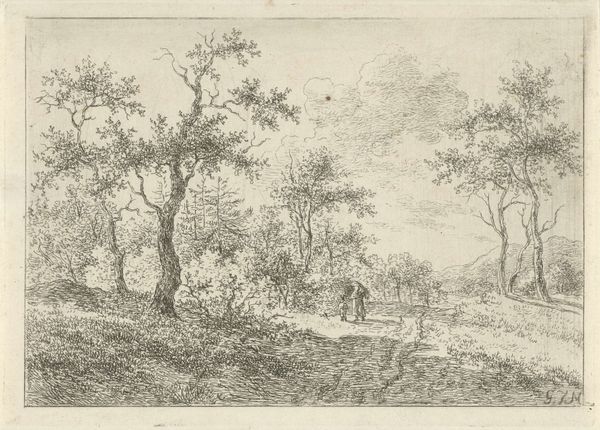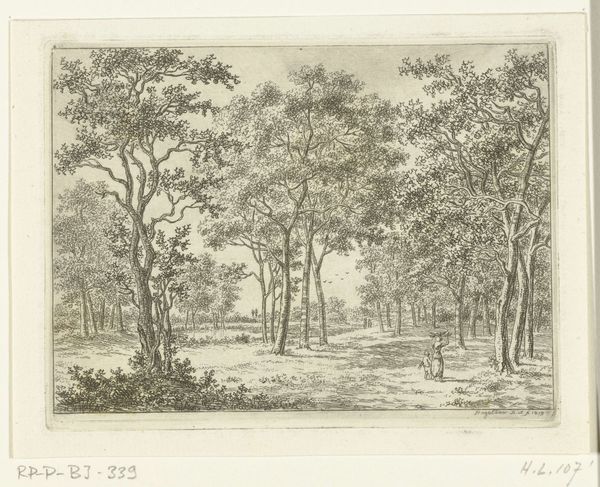
drawing, print, etching
#
drawing
# print
#
etching
#
landscape
#
romanticism
#
line
Dimensions: height 142 mm, width 168 mm
Copyright: Rijks Museum: Open Domain
Editor: So this etching by Ernst Willem Jan Bagelaar, titled *Landscape with a Man and a Boy by a River*, was made sometime between 1798 and 1837. I’m struck by its quietness; the figures are so small in the vast landscape. How do you interpret this work? Curator: Considering the period, it’s easy to see Romanticism at play. Bagelaar presents nature as sublime, an overwhelming force. But notice how the man and boy aren’t dwarfed into insignificance. They're integrated. The etching emphasizes a harmonious relationship between humanity and the natural world, a common trope used by artists responding to the increasing urbanization and industrialization of Europe. Does the size and lack of colour of the etching also say something? Editor: Good point. It does feel more accessible because of its size. What can we say about the distribution? Curator: It challenges traditional notions of high art displayed in elite settings. Prints like this one were relatively affordable and circulated widely. It allows the viewer to perhaps picture themselves and their place in nature, beyond the economic change happening at the time. The distribution made it very popular across different populations. It normalises a world that isn't accessible. Editor: It's fascinating how a seemingly simple landscape print engages with such complex socio-political issues. Thank you! Curator: And it highlights the potent role of art in shaping our understanding of our relationship with the world around us, even through something as apparently simple as a drawing of a father and son in nature.
Comments
No comments
Be the first to comment and join the conversation on the ultimate creative platform.

